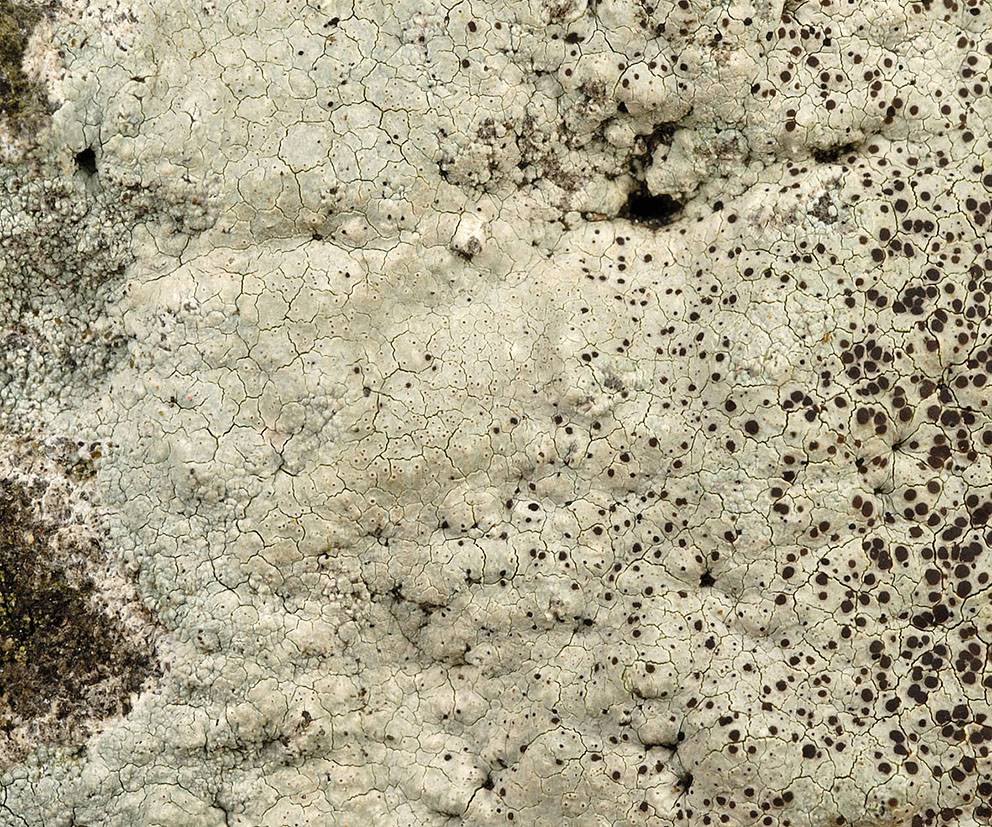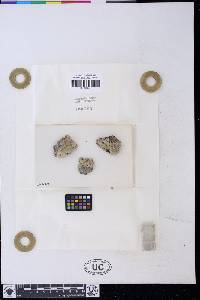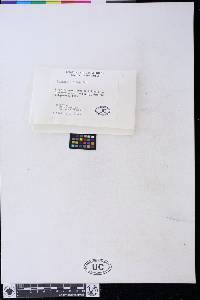
- Home
- Search
- Images
- Species Checklists
- US States: O-Z >
- US National Parks
- Central America
- South America
- US National Parks
- Southern Subpolar Region
|
|
|
|
Family: Lecanoraceae
|
MycoBank no. 389041 Type: France. Territorial collectivity of Saint-Barthélemy, exact locality unknown, original label data: “Habitat ad saxa in insulae Sti Bartolomaei Ind. Occid.” (= living on rock on St. Barthelemy Island, West Indies), without date, Forström, F. s.n. (H-Ach 1173–material cited by Elix & Øvstedal 2007; probably needs lectotypification). Description. Thallus saxicolous, thick, contiguous, barely rimose, fissures with undulating to ±crenate, interlocked edge, eventually merging, and, when well developed forming distinct, closely interlocked areoles; surface pale grey with a pinkish beige tan, dull, epruinose, in parts occasionally ±oxidized (with a pale ‘rust-red’ dust); soralia pustulate, with coarsely granular, pale white to very faintly pale green soredia, when eroded leaving circular, crateriform scars; margin distinct, flexuous, compact, not delimited by a distinct prothallus. Apothecia sparse to numerous, circular, 0.1–1 mm in diam., cryptolecanorine, immersed, not emerging, with a plane to slightly depressed, epruinose disc, margin not or barely differentiated from the surrounding thallus; hymenium hyaline, not inspersed, epihymenium lacking crystals, with a diffuse reddish brown pigment (arnoldiana-brown: K+ dull brown, HCl+ reddish brown, N−), pigment persistent in K (glabrata-type); proper exciple thin, rarely moderately developed and then with diffuse reddish brown pigment (arnoldiana-brown), with few crystals; thalline exciple barely differentiated from surrounding thallus, with few large crystals that do not dissolve in K (±pulicaris-type); hypothecium hyaline to pale yellowish (intensifying in K); ascospores 8/ascus, simple, ellipsoid, (6.9–)9.2–12.0(13.7) × (3.9–)4.4–5.9(–6.9) μm (n = 48). Pycnidia not seen. Chemistry. Cortex P+ yellow, K+ yellow, KC–, C–, UV± dull orange, soredia & medulla P+ yellow, K+ yellow, KC+ orange, C+ orange, UV± bright orange (difficult to see); with atranorin [major], arthothelin [major], skyrin [minor], zeorin [minor], ±demethylchodatin [minor], ±4,5-dichloronorlichexanthone [trace]; [specimens analyzed with TLC: Bungartz, F. 3408 (CDS 27114), 3566 (CDS 27365), 5633 (CDS 33258), 6968 (CDS 36472), 9547 (CDS46830), 5108 (CDS 29321); Clerc, P. 08-276 (CDS 40130)]. Ecology and distribution. Reported from the Caribbean (French Antilles) by Øvstedal & Elix (2007), new to Ecuador and the Galapagos, frequently growing with L. legalloana, L. subimmersa and Caloplaca diplacia, in similar habitats. Notes. Fertile specimens of L. prosecha closely resemble L. legalloana and L. subimmersa ssp. subimmersa, but the thallus contains xanthones and the medulla reacts distinctly C+/KC+ orange. Lecanora subimmersa ssp. ramboldii contains thiophanic acid in addition to arthothelin. These three taxa are also esorediate. In the Galapagos thalli of L. prosecha frequently lack apothecia but are then abundantly sorediate, only rarely specimens with both apothecia and soredia can be found. Lecanora prosecha has whitish, cream-colored soredia very similar to those of L. austrosorediosa, but reacting distinctly C+/KC+ orange. Soredia of Caloplaca diplacia or L. avium are also structurally similar, but typically tinged bluish black; both species lack xanthones (C–/KC–). |
|
|
|


































